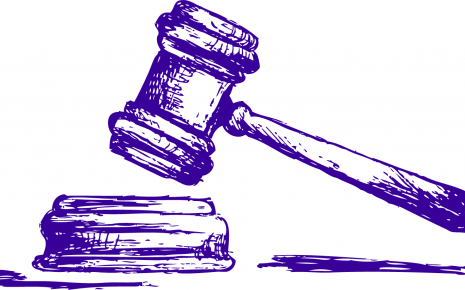Understanding Culpability In Criminal Law
Culpability is a cornerstone of criminal law, determining the extent of
responsibility assigned to an individual for their criminal actions. This essay
will explore the complexities of culpability, examining its diverse expressions
in legal doctrine and illustrating its importance through relevant case studies.
In assessing culpability, courts consider factors such as mens rea, the defendant's mental state at the time of the offense. Courts evaluate the defendant's actions and conduct leading up to and during the crime, including premeditation, planning, and participation level. Circumstances surrounding the crime, including mitigating and aggravating factors such as background, motive, and provocation, are taken into account.
The harm caused by the crime, both to the victim and society, is assessed, considering damage extent, foreseeability, and culpability based on consequences. Courts weigh all factors to determine the accused's culpability, guiding the sentencing decision to ensure accountability while considering case complexities.
Mitigating factors are elements that can potentially reduce the seriousness or blameworthiness of an action or crime. Examples of these factors include remorse, the absence of a criminal record, or coercion.
Conversely, aggravating factors are circumstances that may heighten the severity of an offense or its repercussions. These factors can involve premeditation, the use of violence, or the impact of the crime on the victim or society.
In legal proceedings, both mitigating and aggravating factors are considered during sentencing to establish a fitting punishment that mirrors the gravity of the offense and the unique circumstances of the case.
Role of Culpability in Determining Guilt:
Culpability is a fundamental aspect in determining the guilt or innocence of an accused person in a case. It plays a central role in establishing the mental state and intention behind the alleged offense. Courts consider culpability to ascertain whether the accused possessed the necessary mens rea, or guilty mind, to commit the crime.
The level of culpability influences the severity of charges brought against the defendant and ultimately impacts the outcome of the case. For instance, intentional acts typically result in more severe penalties than those committed accidentally or without intent.
Moreover, culpability guides sentencing decisions, as it reflects the moral blameworthiness and degree of responsibility of the accused. Judges weigh factors such as motive, premeditation, and the harm caused to determine an appropriate punishment that aligns with the principles of justice and deterrence.
In cases where culpability is unclear or disputed, thorough examination of evidence and legal arguments is necessary to establish the accused's level of involvement and accountability. Thus, culpability serves as a cornerstone of the criminal justice system, ensuring fair adjudication and accountability for unlawful conduct.
Components of Culpability:
The principles of criminal liability consist of:
Case Law Examples Illustrating Culpability:
Case law serves as a vital resource for understanding the application and interpretation of culpability in criminal proceedings, providing guidance for future legal decisions and contributing to the development of legal principles.
The groundbreaking case of R v. Cunningham (1957) expanded the concept of culpability, establishing that 'maliciously' could encompass recklessness under specific conditions. This ruling expanded the scope of culpable conduct, recognizing the importance of reckless behaviour in determining criminal culpability.
The Court of Appeal, in permitting the defendant's appeal, determined that for a defendant to have acted 'maliciously,' it must be demonstrated that they intended to cause the specific harm or were careless about the possibility of such harm occurring.
In R v. Nedrick (1986), the court determined that intent to kill can be implied if the defendant anticipated death as a likely outcome of their actions.
In the English criminal law case R v Nedrick (1986), the concept of mens rea in murder was examined. This landmark case established the 'virtual certainty test,' which is applied in situations where indirect (oblique) intention is evident, and the charge involves murder or a similarly specific intent. The appellate court determined, as a binding precedent, that in the context of murder law, a case cannot proceed if the intention to offend is inferred, unless the defendant's actions are so hazardous that death or severe injury is virtually guaranteed.
Conclusion:
The core of criminal law centres around culpability, which defines the ethical obligation individuals have for their behaviour. Whether it be purposeful, careless, or negligent, the mental states of culpability have a significant impact on legal proceedings, affecting the judgement of sentences and protecting against unjust convictions. By examining legal principles and instances of past cases, it becomes clear that culpability is a complex idea with far-reaching consequences for the execution of justice.
Written By: Md.Imran Wahab, IPS, IGP, Provisioning, West Bengal
Email: [email protected], Ph no: 9836576565
In assessing culpability, courts consider factors such as mens rea, the defendant's mental state at the time of the offense. Courts evaluate the defendant's actions and conduct leading up to and during the crime, including premeditation, planning, and participation level. Circumstances surrounding the crime, including mitigating and aggravating factors such as background, motive, and provocation, are taken into account.
The harm caused by the crime, both to the victim and society, is assessed, considering damage extent, foreseeability, and culpability based on consequences. Courts weigh all factors to determine the accused's culpability, guiding the sentencing decision to ensure accountability while considering case complexities.
Mitigating factors are elements that can potentially reduce the seriousness or blameworthiness of an action or crime. Examples of these factors include remorse, the absence of a criminal record, or coercion.
Conversely, aggravating factors are circumstances that may heighten the severity of an offense or its repercussions. These factors can involve premeditation, the use of violence, or the impact of the crime on the victim or society.
In legal proceedings, both mitigating and aggravating factors are considered during sentencing to establish a fitting punishment that mirrors the gravity of the offense and the unique circumstances of the case.
Role of Culpability in Determining Guilt:
Culpability is a fundamental aspect in determining the guilt or innocence of an accused person in a case. It plays a central role in establishing the mental state and intention behind the alleged offense. Courts consider culpability to ascertain whether the accused possessed the necessary mens rea, or guilty mind, to commit the crime.
The level of culpability influences the severity of charges brought against the defendant and ultimately impacts the outcome of the case. For instance, intentional acts typically result in more severe penalties than those committed accidentally or without intent.
Moreover, culpability guides sentencing decisions, as it reflects the moral blameworthiness and degree of responsibility of the accused. Judges weigh factors such as motive, premeditation, and the harm caused to determine an appropriate punishment that aligns with the principles of justice and deterrence.
In cases where culpability is unclear or disputed, thorough examination of evidence and legal arguments is necessary to establish the accused's level of involvement and accountability. Thus, culpability serves as a cornerstone of the criminal justice system, ensuring fair adjudication and accountability for unlawful conduct.
Components of Culpability:
The principles of criminal liability consist of:
- Actus Reus: This pertains to the actual guilty act. It refers to the physical behaviour or action that constitutes a crime. In order for someone to be held criminally responsible, they must have purposely committed a voluntary act or failed to act in violation of the law.
- Mens Rea: This is the guilty state of mind or intention behind the act. It refers to the mental state of the defendant at the time the crime was committed. The level of mens rea can vary depending on the specific offence, ranging from intentionally committing the act to acting recklessly or negligently.
- Intent signifies the deliberate aim or objective to carry out a particular criminal action. It is commonly linked to graver infractions, like first-degree murder, where the offender intends to inflict harm or death.
- Recklessness: Recklessness entails knowingly disregarding a significant and unjustified risk that causes harm to others. This mental condition is apparent in involuntary manslaughter cases, where the defendant's reckless actions result in an unintentional death.
- Negligence: Negligence signifies the absence of exercising reasonable care or foresight, which results in causing harm to others. It is often connected to lesser crimes, such as involuntary manslaughter or negligent homicide.
- Concurrence: This principle requires that the guilty mind (mens rea) and the guilty act (actus reus) occur simultaneously. In other words, both the criminal intent and the criminal act must be present for someone to be held criminally accountable.
- Causation: This element establishes a causal link between the defendant's actions and the harm that resulted. It requires that the defendant's conduct was a significant factor in causing the prohibited consequence.
Role of Culpability in Legal Proceedings:
Culpability plays a crucial role in establishing criminal responsibility and influencing the legal outcomes of court cases. Courts meticulously evaluate the existence and characteristics of culpable mental states in adjudicating cases, considering evidence to determine the defendant's moral accountability.Influence on Sentencing:
Culpability plays a crucial role in determining punishments, with higher levels of intent typically leading to more severe penalties. Offenses with specific intent, like first-degree murder, incur harsher punishments compared to crimes committed through recklessness or negligence. In contrast, evidence demonstrating diminished capacity or absence of intent can mitigate charges or even result in acquittal.Safeguard Against Wrongful Convictions:
The presumption of innocence principle mandates that the prosecution must prove guilt beyond a reasonable doubt, including establishing the defendant's guilty mindset. This standard acts as a safeguard against unjust convictions, guaranteeing that people are not wrongfully punished for crimes they did not mean to commit.Case Law Examples Illustrating Culpability:
Case law serves as a vital resource for understanding the application and interpretation of culpability in criminal proceedings, providing guidance for future legal decisions and contributing to the development of legal principles.
The groundbreaking case of R v. Cunningham (1957) expanded the concept of culpability, establishing that 'maliciously' could encompass recklessness under specific conditions. This ruling expanded the scope of culpable conduct, recognizing the importance of reckless behaviour in determining criminal culpability.
The Court of Appeal, in permitting the defendant's appeal, determined that for a defendant to have acted 'maliciously,' it must be demonstrated that they intended to cause the specific harm or were careless about the possibility of such harm occurring.
In R v. Nedrick (1986), the court determined that intent to kill can be implied if the defendant anticipated death as a likely outcome of their actions.
In the English criminal law case R v Nedrick (1986), the concept of mens rea in murder was examined. This landmark case established the 'virtual certainty test,' which is applied in situations where indirect (oblique) intention is evident, and the charge involves murder or a similarly specific intent. The appellate court determined, as a binding precedent, that in the context of murder law, a case cannot proceed if the intention to offend is inferred, unless the defendant's actions are so hazardous that death or severe injury is virtually guaranteed.
Conclusion:
The core of criminal law centres around culpability, which defines the ethical obligation individuals have for their behaviour. Whether it be purposeful, careless, or negligent, the mental states of culpability have a significant impact on legal proceedings, affecting the judgement of sentences and protecting against unjust convictions. By examining legal principles and instances of past cases, it becomes clear that culpability is a complex idea with far-reaching consequences for the execution of justice.
Written By: Md.Imran Wahab, IPS, IGP, Provisioning, West Bengal
Email: [email protected], Ph no: 9836576565
Law Article in India
Legal Question & Answers
Lawyers in India - Search By City
LawArticles
How To File For Mutual Divorce In Delhi

How To File For Mutual Divorce In Delhi Mutual Consent Divorce is the Simplest Way to Obtain a D...
Increased Age For Girls Marriage

It is hoped that the Prohibition of Child Marriage (Amendment) Bill, 2021, which intends to inc...
Facade of Social Media

One may very easily get absorbed in the lives of others as one scrolls through a Facebook news ...
Section 482 CrPc - Quashing Of FIR: Guid...

The Inherent power under Section 482 in The Code Of Criminal Procedure, 1973 (37th Chapter of t...
The Uniform Civil Code (UCC) in India: A...

The Uniform Civil Code (UCC) is a concept that proposes the unification of personal laws across...
Role Of Artificial Intelligence In Legal...

Artificial intelligence (AI) is revolutionizing various sectors of the economy, and the legal i...








Please Drop Your Comments